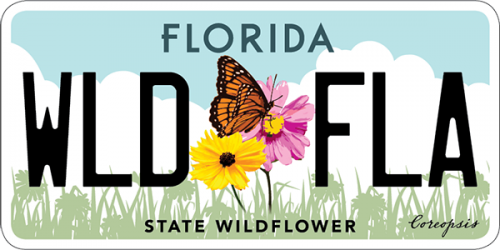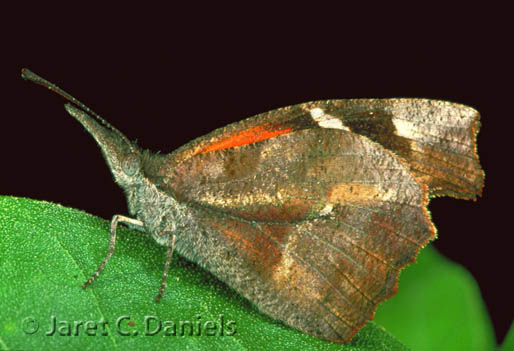- Family name: Nymphalidae/Brush-Footed Butterflies
- General description: brown with orange patches; forewing with white spots toward extended and squared-off apex. Ventral hindwing highly variable from uniform purplish-brown to heavily mottled gray-brown. Head with long, extended labial palpi
- Field Marks: brown with orange patches; forewing apex extended and squared off; forewing apex with white spots; long labial palpi
- Sexes: appear similar
- Wingspan: 35-48 mm
- Life Cycle: Egg: small, yellow, laid singly in leaf axils of host Mature larva: green with yellow lateral line and two small black spots on thorax Chrysalis: green
- Number of Generations: three or more
- Flight Season: February-October
- Abundance: Common
- Habitat: forest margins, stream corridors, deciduous woodlands, shrubby sites
- Larval Host Plants: hackberry (Celtis laevigata)
- Similar Species: No similar species
- Additional Information: Namesake labial palpi distinguish species from all other similar butterflies; rarely found in south Florida. Range is limited in California and Colorado.
- Range in Florida
 The Florida Wildflowers & Butterflies projects at the Florida Museum are sponsored in part by the State of Florida and the Florida Wildflower Foundation, Inc.
The Florida Wildflowers & Butterflies projects at the Florida Museum are sponsored in part by the State of Florida and the Florida Wildflower Foundation, Inc.
